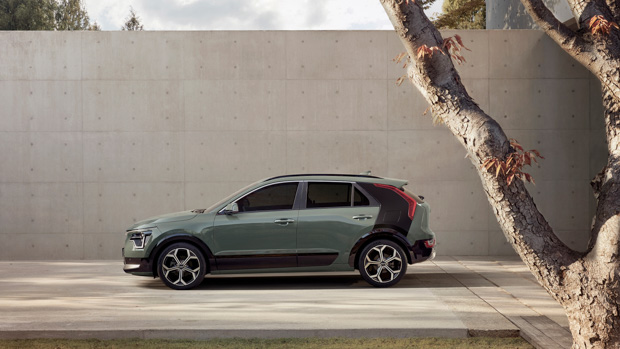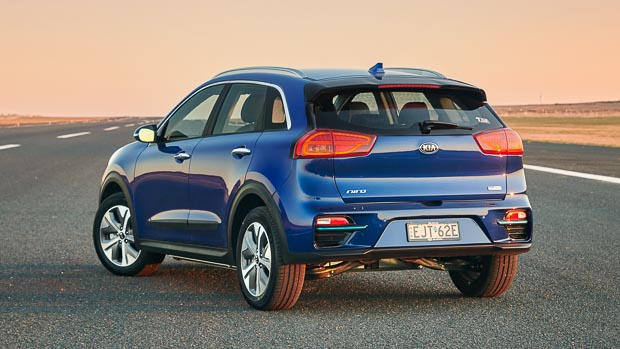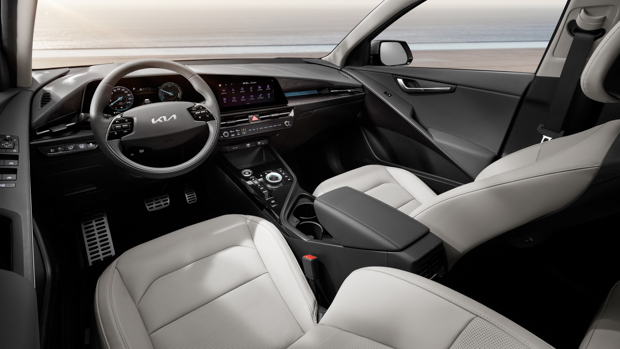-
Car Reviews
- Car News
-
Car Comparisons
Latest comparisons
- Chasing Deals
This heavily-updated small SUV out of Korea is bringing new styling and bigger dimensions making it more suitable for Aussie buyers
Kia has revealed the details of its heavily-facelifted Niro Hybrid ahead of the small SUV’s Australian release in the third quarter of this year – between July and September 2022.
The second-generation Niro shares its predecessor’s platform but its maker says it is a bigger, more frugal and even more efficient SUV this time around.
Kia currently offers the first-generation Niro in Australia as a self-charging hybrid (from $39,990 before on-road costs), plug-in hybrid (from $46,590) and a fully-electric vehicle (from $$62,590) dubbed the Niro EV.
Details of the second-generation PHEV and fully-electric variants of the Niro will be released later with release dates likely to fall in the fourth quarter of 2022, or in early 2023.
The new Niro will share dealership space with a growing number of electrified Kia models, including the EV6 SUV and the Sorento plug-in hybrid large SUV. Kia says it is working on releasing series-parallel hybrid versions of the Sorento and the Sportage midsize SUV in Australia.
When it arrives locally the Niro Hybrid will offer an alternative to popular rivals in the small SUV segment like the Mazda CX-30 and the Toyota C-HR Hybrid.
Despite sharing a platform with the cheerful Hyundai Kona, the Kia Niro has always boasted an interior space advantage over its sibling rival and Kia aims to extend this advantage further.
The Niro has grown in all dimensions and now measures 4420mm long (+65mm), 1,825mm wide (+20mm) and 1545mm high (+10mm) with a wheelbase of 2720mm (+20mm).
The growing size of the Niro Hybrid could help Kia fill the gap left by the Sportage midsize SUV, which is yet to recieve a hybrid option in Australia, and offer a cheaper alternative to the Toyota RAV4 hybrid which is facing extensive stock shortages and customer demand.
Kia says the size increase has paid dividends to the interior space, plus smart packaging like shuffling of the 12-volt battery under the rear seats has increased the boot space by 15 litres to 451 litres.
Kia designers have shifted the Niro’s interior to the marque’s new ‘Opposites Unite’ that already features on the new Sportage and the soon-to-launch EV6. This cabin design features dual 10.25-inch screens encased in a curving piece of glass.
The two screens act as the digital gauge cluster and the infotainment. It joins a slew of other modern technology like new USB C ports and a 10-inch head-up display.
While the Australian specification is yet to be confirmed, Kia has also integrated its new ‘Digital Key 2 Touch system’ that allows drivers to unlock and start their car via their smartphone.
The drivetrain of the Niro has also seen some improvements, though not to the power outputs, with the 1.6-litre four-cylinder petrol engine that produces the same 77kW of power and slightly less torque at 144Nm (down 3Nm).
Sandwiched between the engine and the now lighter six-speed dual-clutch transmission is a 32kW electric motor that assists in delivering a combined power output of 104kW to the front wheels.
The current Niro has an ADR-rated fuel efficiency of 3.8L/100km which breaks even with the very frugal Toyota Yaris Cros Hybrid. The new model may improve this claim but it has yet to be rated under the same standard for comparison.
Kia says it has improved the front strut and multi-link rear suspension setup to improve the “responsiveness, stability and ride comfort” and it could receive a local suspension tune if the Australia outlet deems it necessary.
The new Niro Hybrid will officially go on sale in Korea in the coming days and will arrive in Australia in the third quarter of 2022.
Latest news
About Chasing cars
Chasing Cars reviews are 100% independent.
Because we are powered by Budget Direct Insurance, we don’t receive advertising or sales revenue from car manufacturers.
We’re truly independent – giving you Australia’s best car reviews.


